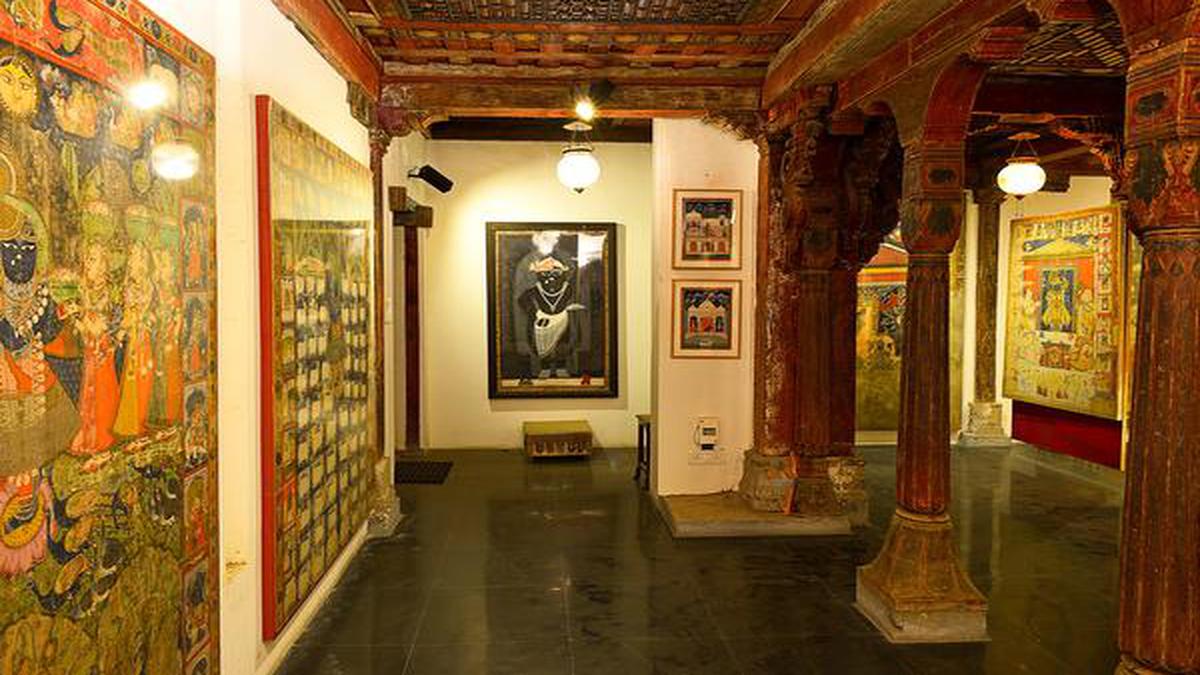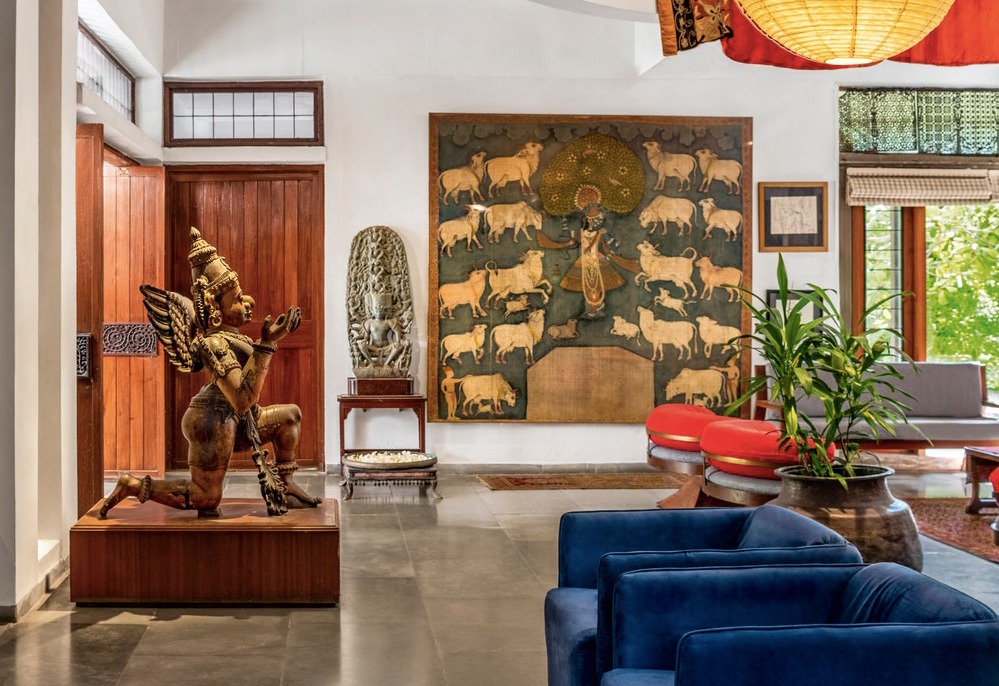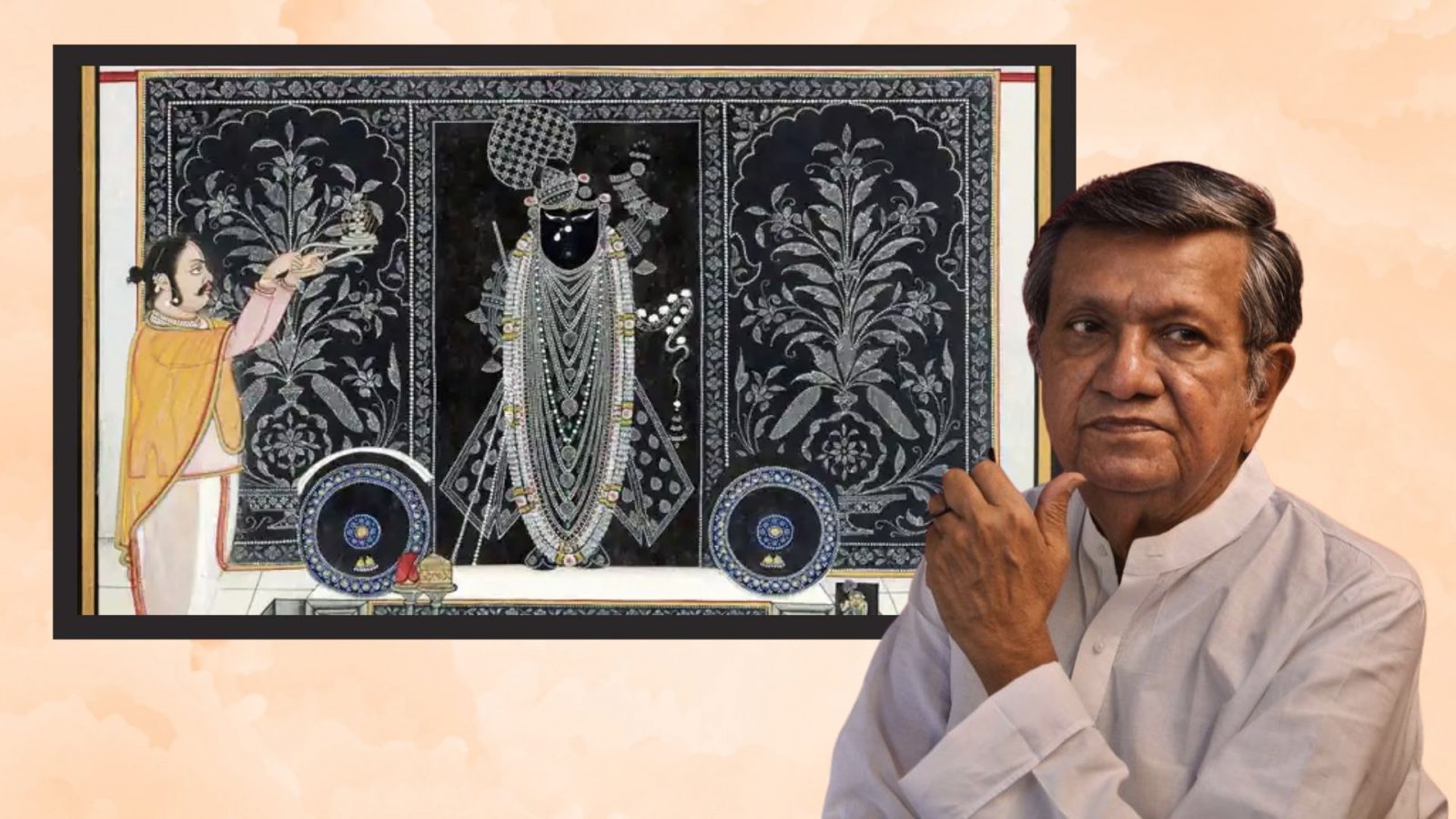An art Scholar’s home is not just a home

In the heritage city of Ahmedabad, a stunning house of the renowned scholar and art collector Amit Ambalal embodies the traditional Gujarati architecture, treasuring the finest collection of Nathdwara’s pichwai art.
When it comes to architecture and design, Ahmedabad has always been open to experimentation and willing to take risks. Here all the top architects of the country and the world were allowed freedom to design as they wished, which is not something one sees in Bombay or Delhi.
“Kamal Chowk” , the art gallery created, in a rehabbed havelis is the centre of attraction, a scholar of the Nathdwara Pichwais, Mr Ambalal dreamt of being able to view his collection at leisure, rather than having it rolled up somewhere in a storage room. For this purpose, he commissioned the gallery space.
Mr Ambalal’s beloved collection of Pichwais lie next to works done by his contemporaries Manjeet Bawa, Anjolie Ela Menon, M.F. Hussain and S.H. Raza. This collection has expanded to such exquisite proportions that it’s even been exhibited at the Art Institute of Chicago.

The interior of Kamal Chowk, Ambalal’s pichvai gallery. Among the masterpieces are perhaps the earliest pichvai in the collection depicting the “Saptasvarup Utsav”, or the festival of seven self-manifested icons, as well as a large late-18th-early-19th-century pichvai of Krishna with Gopis from Jaipur. The gallery also features painted portraits of Tilkayats (head priests of the Nathdwara shrine) and signed works of prominent Nathdwara artists like Ghasiram Hardev Sharma and Bharath Ramamrutham.
When French-American architect Bernard Kohn visited Ahmedabad upon the invitation of celebrated architect B.V. Doshi, Amit bhai’s father, Ambalal Himatlal, commissioned him to make their house, Sumeru, which translates to “wonderful Meru”—named after a sacred mythical mountain.
With intricately carved wooden brackets from Gujarat and the 16th-century Mughal ceiling from Madhya Pradesh’s Burhanpur, the interior architecture dovetails the collection of pichwais and paintings from Nathdwara which are arguably the best in the country.
As one saunters in the courtyard and the gardens, there are remarkable 18th-century “apsara” stone sculptures overlooking the garden courtyard, the 5th-century Vishwaroop sculpture from Shamlaji temple, Gujarat, and a rare 18th-century Gopashtami pichvai from Nathdwara.

Dining area, gloaming with tawny lights, is perfect for liaisons over cups of tea, with a champa tree and sculptures from Shamlaji temple as the backdrop. The main hall of the house is dotted with art, from the mighty 19th-century wooden Garuda from South India, paintings of his guru Jadav to works gifted by Atul Dodiya and Jogen Chowdhury—there is a space for everything and a harmony between each work.
According to Amit bhai, his father was fully involved in its construction as Kohn was heavily inspired by the architecture of Mandu (in Madhya Pradesh), he constructed those sloping walls, reminiscent of mountains.
Art scene in Ahmedabad is vibrant in and of itself, minus the investment factor, which is a more prominent factor in Bombay and Delhi. Here, it is comparable to what is happening abroad”, with thriving spaces for experimentation.
